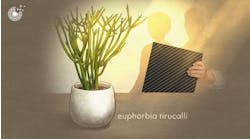The responsibility of designers to not only create for clients and end users, but do so in a way that will better society and the world overall, is a conversation that has occurred for more than a century, particularly in times when technology has advanced.
For William Morris, the concern for those involved with the newly industrialized production process was paramount. Of the quick-and-dirty work required to provide a capitalistic society with the goods they want rather than need, Morris stated in his lecture “The Lesser Arts” in 1877, “I do not blame either one class or another in this matter, I blame all: to set aside our own class of handicraftsmen … I know that the public in general are set on having things cheap, being so ignorant that they do not know when they get them nasty also; so ignorant that they neither know nor care whether they give a man his due….” His argument is one that continues to echo today: The end user does not always know what goes into the products they buy and often their only concern is of cost. Morris believed that as producers and designers who are well aware of the creation process, it was up to those involved to create in a moral manner.
Similarly, in 1951 Raymon Loewy wrote in "Never Leave Well Enough Alone” that while it is “our desire … to give the buying public the most advanced product that research can develop and technology can produce, the adult public’s taste is not necessarily ready to accept the logical solutions to their requirements if this solution implies too vast a departure from what they have been conditioned into accepting as the norm.”
Now at the beginning of the 21st century, we are presented with many of the same considerations, particularly when it comes to sustainability and the effects of the built world on climate change. With all of the technology, knowledge, and capabilities afforded to us, what is the designer’s role in making informed decisions for the client? And at the end of the day, when the end user is moved more readily by price points and familiarity with a particular technology, how do we get them on board with such decisions? Biomimicry is science’s answers to these questions.
Biomimicry is a simple idea wrapped up in an intimidating word that means “to mimic the natural world.” Those involved in biomimicry look to nature for answers to complex design questions. In the article, “Biomimicry: A Path to Sustainable Innovation, ” (from the Massachusetts Institute of Technology's "DesignIssues," Volume 31, Number 3, Summer 2015), Emily Kennedy, et al., explained, “The purpose of biomimicry is to tap the knowledge embodied by nature’s 3.8 billion years of research and development,” i.e. evolution.
The term “biomimetics,” used to describe the convergence of biology and technology, was coined by American inventor Otto Schmitt in the 1960s, and the field gained traction after Janine Benyus’ 1997 acclaimed book, “Biomimicry: Innovation Inspired by Nature.” Benyus approached design from the lens of science, having graduated with both Forest Science and English Literature degrees. In describing the ways in which she came to biomimicry, Benyus stated in a June 2016 interview with interiors+sources, “I saw that [these patterns were] the instructions on how to be on Earth. So I just assumed that designers were using these patterns. If you’re designing a solar cell, probably the first thing you do is talk to someone who knows about photosynthesis, for example. And when I found out that wasn’t true, I decided to go looking for it.”
Biomimicry is taken a step further when considering evolution and the Earth's ability to self-regulate. The designs that come from science have the ability to approach extreme sustainability efforts. “Biomimicry: A Path to Sustainable Innovation” notes, “Through biomimicry, designers can guide development of technologies that have net zero or net positive environmental consequences because biological solutions have been time-tested by billions of years of evolution and embody successful strategies for thriving on earth.”
What’s more, manufacturers that utilize biomimicry have been able to blend the practice seamlessly into their designs, thereby bypassing concerns that can arise in introducing unfamiliar, Jetson-esque products to the end user. Oftentimes, unless they search for more information, a buyer may be unaware that the carpet pattern they have selected was designed using biomimcratic principals.
This is good news to designers who are feeling the responsibility to create spaces that are Earth- and human-friendly while the debate over whether or not climate change is real permeates American society. Add in the more stringent regulations to expose the lifecycle process under the recently released LEED v4 criteria, and what we are seeing interior manufacturers becoming more willing and eager to embrace biomimicry.
And the number of biomimcratic products will only increase exponentially. Kennedy, et al. stated that biomimicry could account for $425 billion of the U.S. gross domestic product and $1.6 trillion globally by 2030, according to a report by the Fermanian Business & Economic Institute,
These numbers come thanks to several factors: increased scientific research (from 2000 to 2015, Kennedy stated there was a “fivefold increase in biomimicry patents, scholarly articles, and research grants”), a wider ability to create biomimcratic designs through technological advancements, and the allure of the Maker Movement which has made design from nature—as with reclaimed wooden tables and the use of craftsman trades that utilize traditional materials and techniques—a daily fixture in interiors.
What this means for designers is that the space between good design as socially conscious and good design as commercial is narrowing. Additionally, the technologies that are coming out of biomimicry are able to merge the desire for a quick and easy solution with the best available materials.
Take Sharklet for example. The translucent film, patterned after the dermal denticles of sharkskin, inhibits bacteria growth without the use of additives, chemicals, antibiotics, or antimicrobials.
The idea for Sharklet came from Anthony Brennan, a professor of engineering at the University of Florida, when he was asked by the Navy to devise a way to keep barnacles from adhering to ships. In noticing that sharks don’t come into contact with build-up in the same currents, Brennan looked at the surface topography, realizing that sharks’ complex skin pattern made an unstable environment for organisms.
Sharklet Technologies’ CEO Mark Spiecker took this news and ran with it, creating an easy peel-and-stick film that, through comparison studies, shows a 94-percent decrease in bacteria. (This is according to the report, "Armor-Like Shark Skin May Offer Blueprint for Defense Against Superbugs" that aired on "PBS Newshour" on March 27, 2015.) Spiecker and those at Sharklet hope this will lessen the rate of infection within hospitals without having to invest in new products.
Although the future may be uncertain, one thing is for sure: Manufacturers will continue to look for ways to create successful commercial products that provide a socially aware alternative to the designs that came before. It’s a logical conclusion that integrating the latest accessible technology is the best way to stay ahead of the curve, and therefore those manufacturers that are able to see biomimicry as another arm of technology’s ever-widening reach would lead the trend. While science fiction from the last 50 years may have given us a glimpse of the future as a shiny, chrome, alien world, reality may end up looking more like our very own rock in the universe.
[1] Massachusetts Institute of Technology, “DesignIssues,” Volume 31, Number 3, Summer 2015
[2] “Armor-Like Shark Skin May Offer Blueprint for Defense Against Superbugs,” PBS Newshour, March 27,2015)


